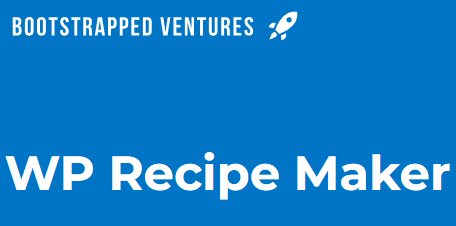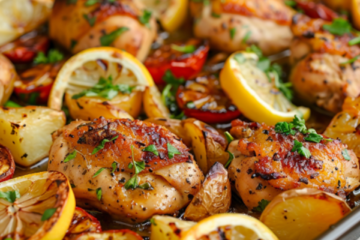Running a successful food blog requires more than mouth-watering recipes and beautiful photos. To truly stand out, you need tools to optimize your content for search engines, enhance user experience, and streamline your workflow. Enter WP Recipe Maker, a powerful Bootstrapped Ventures plugin designed specifically for food bloggers. This plugin offers a range of features that make it the best recipe plugin for WordPress food blogs. This comprehensive guide delves into the key features, benefits, and tips for using WP Recipe Maker to elevate your culinary content.
Table of Contents

Key Features of WP Recipe Maker
User-Friendly Interface
One of the standout features of WP Recipe Maker is its user-friendly interface. The plugin is designed with beginners and experienced bloggers in mind, making creating and managing recipes easy. The intuitive drag-and-drop interface allows you to add ingredients, instructions, and images effortlessly. This means you can focus more on your culinary creations and less on the technical details.
Customizable Recipe Templates
WP Recipe Maker offers a variety of customizable recipe templates that allow you to match the look and feel of your blog. Whether you prefer a clean, minimalist design or something more vibrant, there’s a template for you. Additionally, you can customize these templates to suit your specific needs, ensuring that your recipes look great and reflect your brand.
SEO Optimization
Optimizing your recipes for search engines is crucial for driving traffic to your blog. WP Recipe Maker has built-in SEO features that help improve your search engine rankings. The plugin supports structured data, which means your recipes can appear as rich snippets in search results. This not only enhances visibility but also attracts more clicks.
Nutrition Facts Integration
In today’s health-conscious world, providing nutrition facts for your recipes is a valuable addition. WP Recipe Maker allows you to calculate and display nutritional information for your recipes automatically. This feature adds value for your readers and helps establish your blog as a reliable source of healthy and delicious recipes.
Print-Friendly Recipes
Offering a print-friendly version of your recipes is a great way to enhance user experience. WP Recipe Maker makes it easy to create printable recipes that are clean and easy to read. This feature is particularly appreciated by readers who prefer a physical copy of the recipe while cooking.
Mobile Responsiveness
With more people browsing the internet on their mobile devices, having a mobile-responsive blog is essential. WP Recipe Maker ensures your recipes look great on all devices, from desktops to smartphones. This improves user experience and helps with SEO, as search engines favor mobile-friendly sites.
Interactive Recipe Features
Engaging your audience is key to building a loyal readership. WP Recipe Maker includes interactive features such as user ratings and comments. Readers can rate your recipes and leave feedback, fostering a sense of community and encouraging repeat visits. The plugin also integrates with social media, making it easy for readers to share your recipes with their networks.
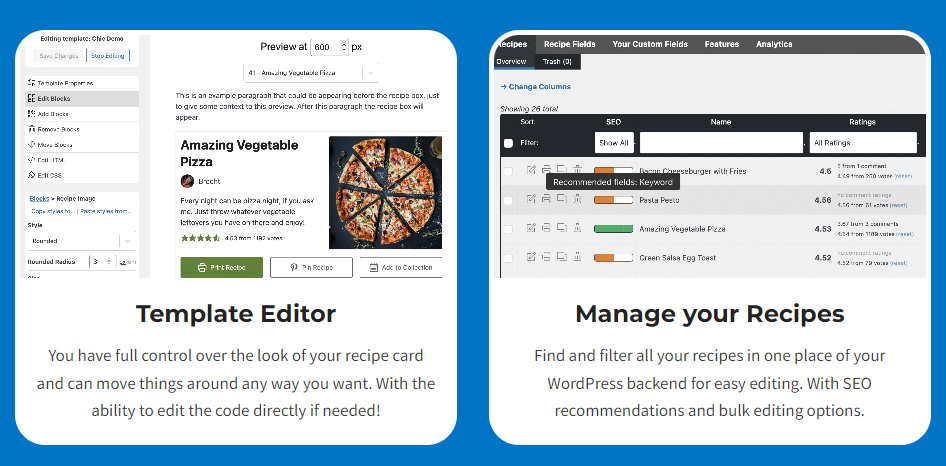
Benefits of Using WP Recipe Maker for Food Blogs
Enhanced User Experience
A positive user experience is crucial for retaining readers and encouraging them to explore more of your content. WP Recipe Maker significantly enhances the user experience on your blog by providing a clean, organized, and visually appealing way to present your recipes. The intuitive layout, easy-to-read instructions, and engaging interactive features create a more enjoyable and satisfying browsing experience.
Improved SEO and Traffic
One of the main goals of any blog is to attract and retain visitors. WP Recipe Maker’s robust SEO features can help you achieve higher search engine rankings, resulting in increased traffic to your blog. The plugin supports structured data, making it easier for search engines to understand and index your recipes. This can lead to your recipes appearing as rich snippets in search results, which are more likely to attract clicks. Blogs that have implemented structured data often see a significant increase in organic traffic.
Case Study: A food blog that integrated WP Recipe Maker saw a 25% increase in organic traffic within three months. The blog’s recipes frequently appeared in Google’s rich snippets, attracting more visitors and boosting engagement.
Increased Engagement
WP Recipe Maker’s interactive features encourage user engagement by allowing readers to rate recipes, leave comments, and share their own cooking experiences. This fosters a sense of community and provides valuable feedback that can help you improve your content. Higher engagement levels can also lead to better SEO rankings, as search engines often prioritize content that receives more interaction.
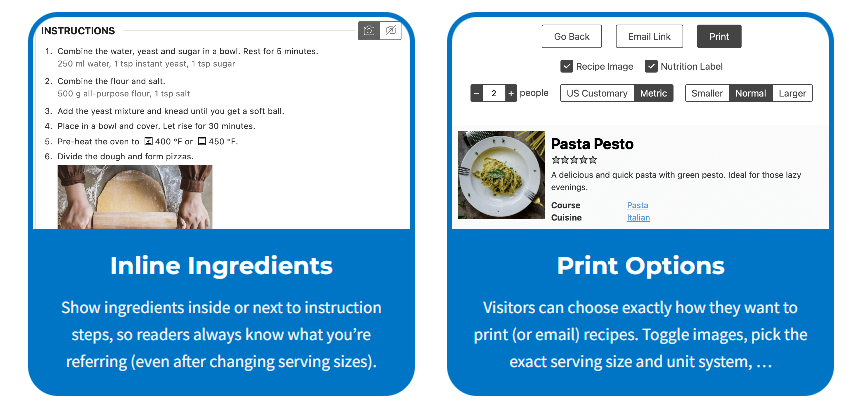
Comparison with Other Recipe Plugins
WP Recipe Maker vs. Other Popular Plugins
When choosing a recipe plugin, it’s important to consider the unique features and benefits each one offers. Here’s how WP Recipe Maker stacks up against other popular recipe plugins:
WP Recipe Maker:
- User-friendly interface
- Customizable templates
- Built-in SEO features
- Nutrition facts integration
- Print-friendly recipes
- Mobile responsiveness
- Interactive features
Other Plugins:
- May lack some advanced SEO features
- Often have limited customization options
- May not include nutrition facts or print-friendly formats
- Varying levels of mobile responsiveness and user interaction features
While other plugins may offer some useful features, WP Recipe Maker provides a comprehensive package that caters specifically to the needs of food bloggers, making it the superior choice.
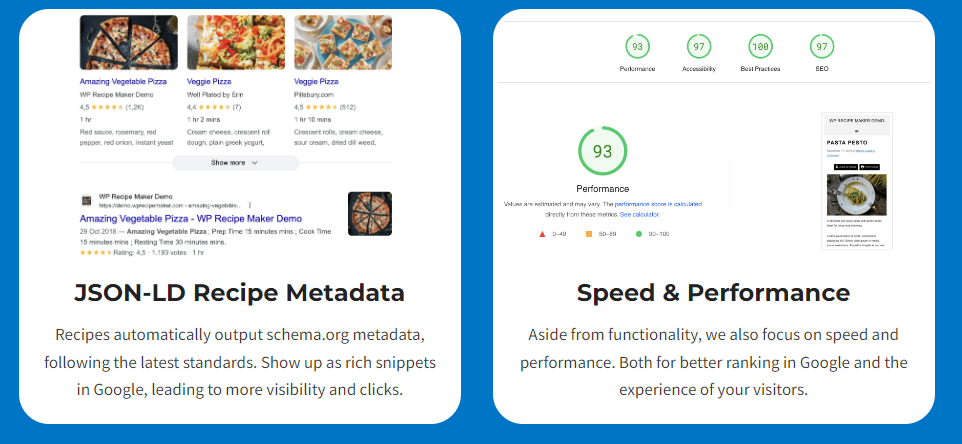
How to Get Started with WP Recipe Maker
Installation and Setup
Getting started with WP Recipe Maker is straightforward. Follow these steps to install and set up the plugin:
- Purchase and Download: Visit the WP Recipe Maker website and purchase the plugin. Download the plugin file to your computer.
- Upload to WordPress: In your WordPress dashboard, go to Plugins > Add New > Upload Plugin. Choose the downloaded file and click “Install Now.”
- Activate the Plugin: Once installed, click “Activate” to enable the plugin on your blog.
- Run the Setup Wizard: Follow the setup wizard to configure basic settings. This includes selecting your preferred recipe template and connecting to any third-party services like Google Analytics.
Creating Your First Recipe
Creating your first recipe with WP Recipe Maker is easy. Here’s a step-by-step guide:
- Add New Recipe: In your WordPress dashboard, go to WP Recipe Maker > Add New Recipe.
- Enter Recipe Details: Fill in the recipe title, description, ingredients, and instructions. You can also add images and nutritional information.
- Customize Template: Choose your preferred template and customize it to match your blog’s style.
- Publish Recipe: Once you’re satisfied with the details, click “Publish” to make the recipe live on your blog.
Advanced Tips and Tricks
Customizing Templates
WP Recipe Maker offers a range of customization options for its templates. Here are some advanced tips for making your recipes stand out:
- Custom CSS: Use custom CSS to tweak the appearance of your recipe templates. This allows you to match your blog’s design more closely.
- Template Tags: Utilize template tags to add dynamic content to your recipes, such as cooking times, difficulty levels, and serving sizes.
Utilizing SEO Features
Maximize the SEO potential of WP Recipe Maker by following these best practices:
- Keyword Optimization: Ensure your recipe titles and descriptions include relevant keywords.
- Alt Text for Images: Add descriptive alt text to your recipe images to help search engines understand the content.
- Rich Snippets: Take advantage of the plugin’s structured data features to enhance your recipes’ visibility in search results.
Engaging Your Audience
Increase engagement on your blog by leveraging WP Recipe Maker’s interactive features:
- Encourage Reviews: Ask your readers to rate and review your recipes. Positive reviews can attract more visitors and improve your SEO.
- Social Sharing: Make it easy for readers to share your recipes on social media by integrating sharing buttons.

Frequently Asked Questions (FAQ)
Common Questions About WP Recipe Maker
Q: Is it compatible with all WordPress themes? A: Yes, WP Recipe Maker is designed to work with any WordPress theme. The plugin is highly customizable, allowing you to adjust its appearance to match your blog’s design.
Q: Can I import recipes from another plugin? A: Yes, WP Recipe Maker offers import tools that make it easy to transfer your existing recipes from other popular recipe plugins.
Q: Does it support multiple languages? A: Absolutely. WP Recipe Maker is translation-ready and supports multiple languages, making it accessible to a global audience.
Q: Is there a free version available? A: Yes, there is a free version of WP Recipe Maker with basic features. However, the premium version offers a wide range of advanced features that can significantly enhance your blog.
Q: How often is it updated? A: WP Recipe Maker is regularly updated to ensure compatibility with the latest WordPress versions and to introduce new features and improvements.
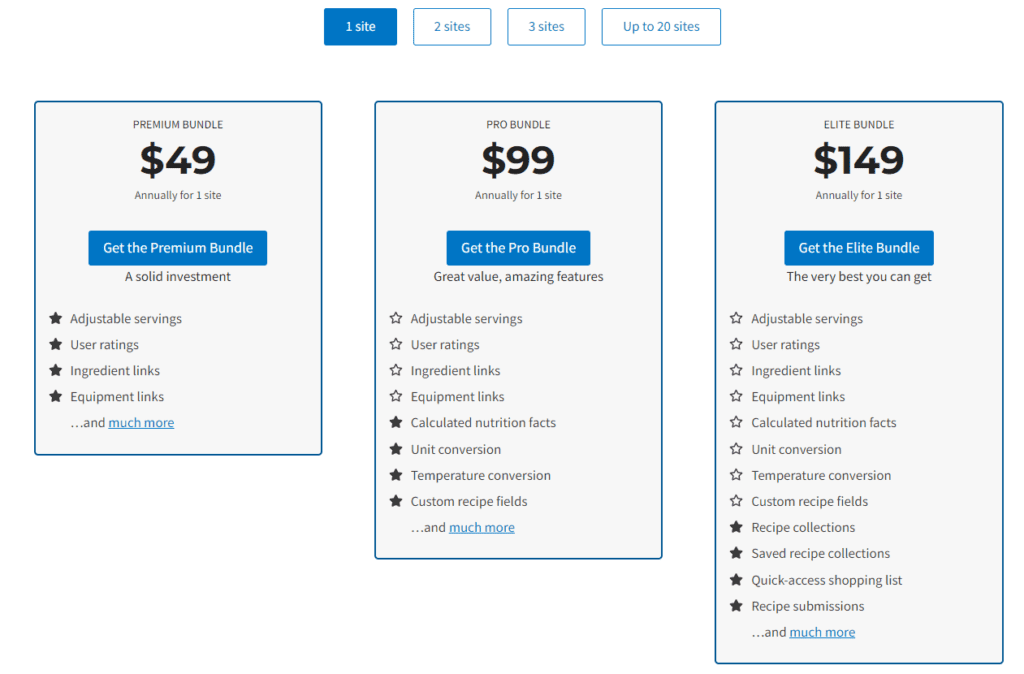
Conclusion
WP Recipe Maker is undoubtedly the best recipe plugin for WordPress food blogs. Its user-friendly interface, customizable templates, robust SEO features, and interactive elements make it an invaluable tool for any food blogger. This plugin can enhance your content, improve user experience, and drive more traffic to your blog.
Call to Action: Ready to take your food blog to the next level? Try WP Recipe Maker today and experience the difference it can make. Share your experiences in the comments below, and let’s support each other in creating amazing culinary content.
Additional Resources
For more information on optimizing your food blog, be sure to check out the following resources:
- Books:
- Food Blogging For Dummies by Kelly Senyei
- Will Write for Food: The Complete Guide to Writing Cookbooks, Blogs, Memoir, Recipes, and More by Dianne Jacob
- Websites:
- Articles:
- “How to Optimize Your Food Blog for SEO” on Yoast
- “Top Tips for Food Photography” on Food Photography Blog
- “How to Make Money From a Food Blog” on Kiddo Cooks Blog
- Tools:
- Google Keyword Planner
- Ahrefs
- Canva
- Adobe Lightroom
Kitchen Gear and Equipment We Use and Love
I just wanted to let you know that some of the links on this page are affiliate links. This means that if you click on these links and make a purchase, I may earn a small commission at no extra cost to you. Rest assured, I only recommend products and services that I personally use and love. Your support through these links helps me continue to create valuable content and keep this blog running. I appreciate your support!

